Pakistan’s commercial capital, Karachi, is no stranger to politically motivated violence. Since the mid 1980’s, when the MQM erupted on the political firmament of Karachi, political violence had pretty much come to be accepted as an integral part of the city’s life. But in recent years, the violence has acquired the form of an almost institutionalised anarchy, what with political turf battles and ethnic animosities getting entwined with criminal syndicates, sectarian mafias and Islamic terror groups. It would perhaps not be too far-fetched to say that if Karachi is a microcosm of Pakistan, then the violence in that city exemplifies the creeping anarchy that threatens to engulf the entire country. Indeed, like in rest of Pakistan, in Karachi the lines between ethnic, political, sectarian, jihadist and criminal violence have become so blurred that no one knows anymore who is killing whom and for what purpose.
The latest paroxysm of violence in the city occurred after unidentified gunmen shot dead a MQM legislator, Raza Haider, inside a mosque on August 2. Within minutes of the assassination, Karachi descended into chaos. In a four day long orgy of violence, more than a 100 people died, scores of shops and vehicles were burnt down, and the entire business activity ground to a halt which cost the economy around Rs 10 billion. The motive behind the murder remains unclear – was Haider killed because he was a Shia? was his killing the outcome of the growing tension between the Mohajir MQM and the Pashtun ANP)? was the killing a result of some underworld deal gone awry? was it a deliberate attempt by agent provocateurs to instigate violence in the city and thereby not only destabilise the coalition government but also disrupt NATO supply lines that run from Karachi to Kabul and Kandahar. What is clear, however, is the ease with which armed gangs can hold the city hostage for days without any let or hindrance from the law enforcement agencies.
Leaving aside the high profile nature of the killing, the fact is that Haider’s murder is part of the phenomenon of ‘target killing’ that has manifest itself in Karachi for a number of years now. Initially, the victims of target killings were generally police officers who had been involved in extra-judicial killings of thousands of MQM activists in the mid 1990’s. Later, workers of the break-away faction of the MQM started becoming casualties of target killings. But since around 2008, the phenomenon of target killing has acquired a more sinister form. Political workers and activists of almost all the political parties started being targeted. Worse, ordinary people who probably had nothing to do with politics started being gunned down for no other reason except for their ethnic origins.
It is commonly argued that this sort of target killing in which around 350 people have been killed in the first seven months of the current year was being carried out by the militant wings kept by all the major political parties. While there is as yet no evidence to corroborate this argument, the theory is that Karachi is in the midst of a political turf war between the various political parties, who are targeting each others’ workers to either impose or maintain their dominance in various localities of the city. Further, since much of Karachi’s politics centres on ethnic mobilisation, ordinary people are targeted on the basis of their ethnic background in order to discourage them from settling in the city and changing the demographic balance. If indeed this is the case, then this is more like a civil war than a political turf war.
The political nature of target killings has induced a stasis among the law enforcement agencies. Political compulsions of the ruling PPP, which depends on MQM for survival in Islamabad and is a coalition partner of the ANP in Khyber-Pakhtunkhwa, is just one of the obstacles preventing a crackdown to put a stop to politically motivated target killings. The nexus between the political class and the powerful criminal syndicates involved in narcotics, gun-running, land-grabbing, protection, extortion, kidnapping and contract killing rackets is another very big obstacle in cleaning up Karachi. While the politicians rely upon these criminal syndicates (most of them organised along ethnic lines) to settle political scores and raise funds for political activities, the underworld not only enjoys the patronage and protection of the political class but also thrives in unsettled conditions that exist in the city.
Rather than confront the growing rot in the system, the political leadership has ducked the issue by finding a convenient scapegoat in sectarian organisations which too have been indulging in targeting members of rival sects. For instance, Pakistan's Interior Minister, Rehman Malik, has blamed the Sunni extremist group Sipah-e-Sahaba Pakistan and its militant wing Lashkar-e-Jhangvi for the killing of Raza Haider. But even if the SSP or LeJ were involved in Haider’s killing, it doesn’t explain who was responsible for the slaying the 100 after Haider’s murder. While Malik has blamed the un-named ‘third force’ and ‘enemies of Pakistan’ wanting to destabilise the country for the killings, the MQM has squarely held ANP responsible for Haider’s killing. On its part, the ANP has blamed MQM for the butchery that followed the assassination, in which most of the people who were victims of targeted killings were Pashtuns.
This is not to deny the fact that sectarian terrorist groups are very active in Karachi and have been plying their murderous trade for years. One manifestation of their activity has been the systematic gunning down of over a 100 Shia doctors. In retaliation, workers of SSP have been targeted by suspected Shi’ite militant groups. The sectarian violence is not limited to the Shia-Sunni divide but has also been seen between militant organisations of Sunni sects like Barelvis, Deobandis and Ahle Hadith. Compounding the confusion are reports that some of the sectarian target killings might have been the handiwork of the militants wings of political parties either to settle political or personal scores or even to check the growth and influence of sectarian groups.
Yet another layer of violence in Karachi has been added by the radical mosques and madrassas that dot the city and have provided the underpinning for Pakistan's flourishing jihad industry. It is not for nothing that Karachi has gained the reputation of being a hub of jihadist militias, a sort of terror central in which terror cells and modules proliferated. Almost all major jihadist groups have their networks, cells and modules in the city, many of which work in conjunction with al Qaeda and Taliban. In addition, the Islamist terror groups have also developed a mutually beneficial relationship with the criminal syndicates. Not surprisingly, over the years, Karachi has emerged as a sort of terror central which not only serves as a transit point for domestic and international jihadists, but is also a critical base for the jihad industry, providing recruits, resources and refuge to the jihadist groups.
In order to not attract too much attention to their activities, the jihadists have been lying low for quite some time now in Karachi, quietly building up their presence and strength all the time. But with its ears to the ground, the MQM, which is probably the only political party in Pakistan which is implacably opposed to the Taliban, has for long been warning about the rising talibanisation of Karachi. Although these warnings have been dismissed by many people as being too alarmist, as also being politically motivated to stem the influx of Pashtuns into the city, a number of Taliban cells and modules have been busted by the police in the last few months.
For the Taliban / al Qaeda, Karachi has critical strategic importance – shut down the city and you shut down the NATO supply lines which run from Karachi to Kabul and Kandahar. Close to 60% of NATO logistics supplies land at the Karachi Port and Port Qasim from where they are transported by road to Afghanistan. Until now, the NATO supply convoys have been attacked in upcountry Pakistan, including on the outskirts of Islamabad. All that has happened in Karachi is that transporters have been threatened to decline carrying NATO cargo. At the same time, the Islamist terror groups in Karachi have kept the city on the edge by indulging in low level violence and the occasional bomb attack. But this could change practically overnight if the jihadists exploit the existing political, ethnic and sectarian fault-lines in the city by provoking large scale violence through target killings. And it is quite possible that Raza Haider’s murder was a test case to see the efficacy of the strategy of shutting down Karachi.
Adding to the murkiness are the suspicions that the infamous intelligence agencies like ISI and MI might be also indulging in some of the target killings either directly or through the Islamist and criminal mafias’, many of which are known to have enjoyed a close working relationship with the intelligence establishment. The objective could be either to destabilise the government and/or remove from the scene some inconvenient people.
Given the multiplicity of players involved, restoring some semblance of law and order in Karachi seems to be a rather tall task, way beyond the intellectual or administrative capacity of the civilian government. But the civilian government is extremely reluctant to call in the army to clean up the mess, because doing so will be an acknowledgement of the complete failure of politicians, which in turn will have serious repercussions for the existing political dispensation in Pakistan. The continuing drift will however only worsen the problem in Karachi, which like the rest of Pakistan, is now waiting tensely for that one spark that will conflagrate the whole place.

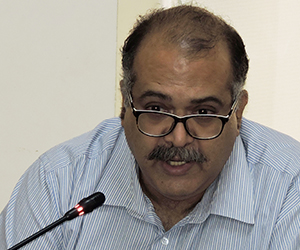
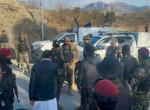
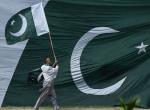


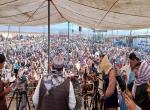
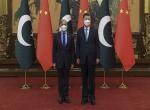
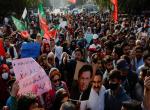
Post new comment